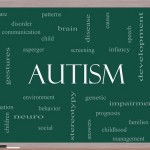
Classrooms come with their own unique characters, props, and soundtracks. To the average student, these things meld into the background, setting the scene for learning. However, for children affected by autism, simple disruptions—from the opening of a book to the ringing of a bell—can cause major setbacks in the learning experience.
How can teachers and parents ensure that the needs of students with autism are being addressed?
Learning to learn: It is essential for any student to develop good learning habits in order for true learning to take place, and the same is true for children on the autism spectrum. Learning how to sit appropriately, turn on “listening ears,” and raise a hand to respond are foundational skills that need to be taught and reinforced right off the bat. Autism is a spectrum disorder, in which symptoms may vary from mild to severe based on the child. For that reason, it is critical not to generalize a diagnosis.
(Next page: Five more tips)Practice predictability: Students with autism are most comfortable when they are taking part in a predictable schedule. By creating a “visual schedule”—a sequence of pictures or symbols that represent each activity during the day—children are better prepared to know what to expect and anticipate transactions. By knowing what is coming next in their daily schedule, the child is able to focus more on the task at hand, with less uncertainty about what is ahead.
See also:
An assistive technology guide for autism
Consistent reinforcement: It is vital that you regularly reinforce desired skills in order to maintain them. Use social praise and tangible items such as stickers to encourage desired behaviors. Try using a “token system,” where students earn a set number of small items—such as stamps on a chart—that they can then trade in for a special reward, such as a longer recess break. These methods help motivate the child to work on their skills and continue good work.
Change the lesson plan: There isn’t just one way to teach students with autism. Children on the spectrum often require several different ways of teaching the same topic to address the different ways in which they learn. For example, some children may have strong auditory processing and can learn through memorization of songs. Others may be visual, spatial, or kinesthetic (i.e. movement) learners. Be flexible, and present information in several ways in order to successfully teach a skill.
Get social: Social skills are fundamental to finding success in school, as well as in life. These skills spill over into other areas in the classroom and lead to positive advancements for children. Parents should make sure to set up play dates, attend social skills groups, or join community activities with peers of their child.
Small steps: Improvement is an incremental process. But small steps toward progress are still progress, and these should be recognized and celebrated. Always try to remain consistent when implementing strategies, yet keep an open mind to modifying your approach during a child’s treatment.
By observing these guidelines for teaching and encouraging a child on the autism spectrum, educators and parents can position students at an advantage for achieving future success in school. And remember, perhaps the most important thing you can do for the child in your life with autism is to remain positive and be patient with his or her progress.
Heather Patin, M.A., is a teacher, behavioral analyst specializing in children with autism, and advisor to Generation Rescue—a national organization that provides hope, information, and immediate treatment assistance to families affected by autism spectrum disorders.
See also:
An assistive technology guide for autism
- The evolving requirements of a K-12 school network - April 24, 2024
- A bungled FAFSA rollout threatens students’ college ambitions - April 24, 2024
- How digital tools and AI can enhance social studies - April 23, 2024

